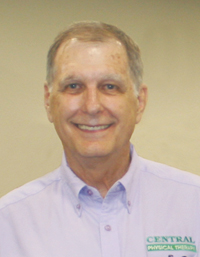
On average, someone suffers from a stroke every 40 seconds. Strokes are the third leading cause of death and the number one cause of serious long-term disability. A stroke can occur at any age but most often in someone over the age of 65 with the chance of stroke doubling every ten years starting at age 55. Strokes most often occur the region of the country known as the “Stroke Belt” which is Southeastern US and the Mississippi Valley. The region of the country with the fewest strokes is in Southwest US.
Typically, there are three types of strokes, each having differing degrees of severity.
Ischemic stroke occurs most often and is responsible for 80 per cent of all strokes. Ischemic stroke happens outside of the brain and is caused by a narrowing of the arteries by cholesterol deposits called atherosclerosis or by blood clots from a number of conditions that form near the brain. Stroke happens when narrowing of the arteries or clots prevent oxygen in the blood stream from getting to the brain. Without oxygen, brain cells die rapidly and is why immediate medical attention is critical.
Twelve percent of strokes are Intracerebral hemorrhage. This type of stroke is bleeding that occurs inside the brain and causes an increase in pressure in the area of the brain where the bleeding occurs. If the bleeding builds very fast, loss of consciousness and death may occur. Hemorrhage in the brain is usually caused by high blood pressure but can be the result of trauma, infection, or weak blood vessels
Subarachnoid hemorrhage is a third type of stroke. This type of stroke is a result of a rupture of an abnormality of an artery called an aneurism and can happen at any age. This stroke causes the worst headache ever and may result in loss of consciousness or even death.
The effects and the seriousness of stroke depend on part of the brain in which the stroke occurs. Since different parts of the brain control different parts of the body, the symptoms, which also become warning signs of stroke, could be weakness, difficulty in walking, with speech, seeing, or sensation. A headache usually accompanies a stroke, but not always, and strokes can sometimes be completely painless.
Call 911 immediately when these symptoms occur.
Recycle on Wednesday and walks should be thirty minutes now.
Tom Coplin PT
Central Physical Therapy
 On average, someone suffers from a stroke every 40 seconds. Strokes are the third leading cause of death and the number one cause of serious long-term disability. A stroke can occur at any age but most often in someone over the age of 65 with the chance of stroke doubling every ten years starting at age 55. Strokes most often occur the region of the country known as the “Stroke Belt” which is Southeastern US and the Mississippi Valley. The region of the country with the fewest strokes is in Southwest US.
On average, someone suffers from a stroke every 40 seconds. Strokes are the third leading cause of death and the number one cause of serious long-term disability. A stroke can occur at any age but most often in someone over the age of 65 with the chance of stroke doubling every ten years starting at age 55. Strokes most often occur the region of the country known as the “Stroke Belt” which is Southeastern US and the Mississippi Valley. The region of the country with the fewest strokes is in Southwest US.

0 comments